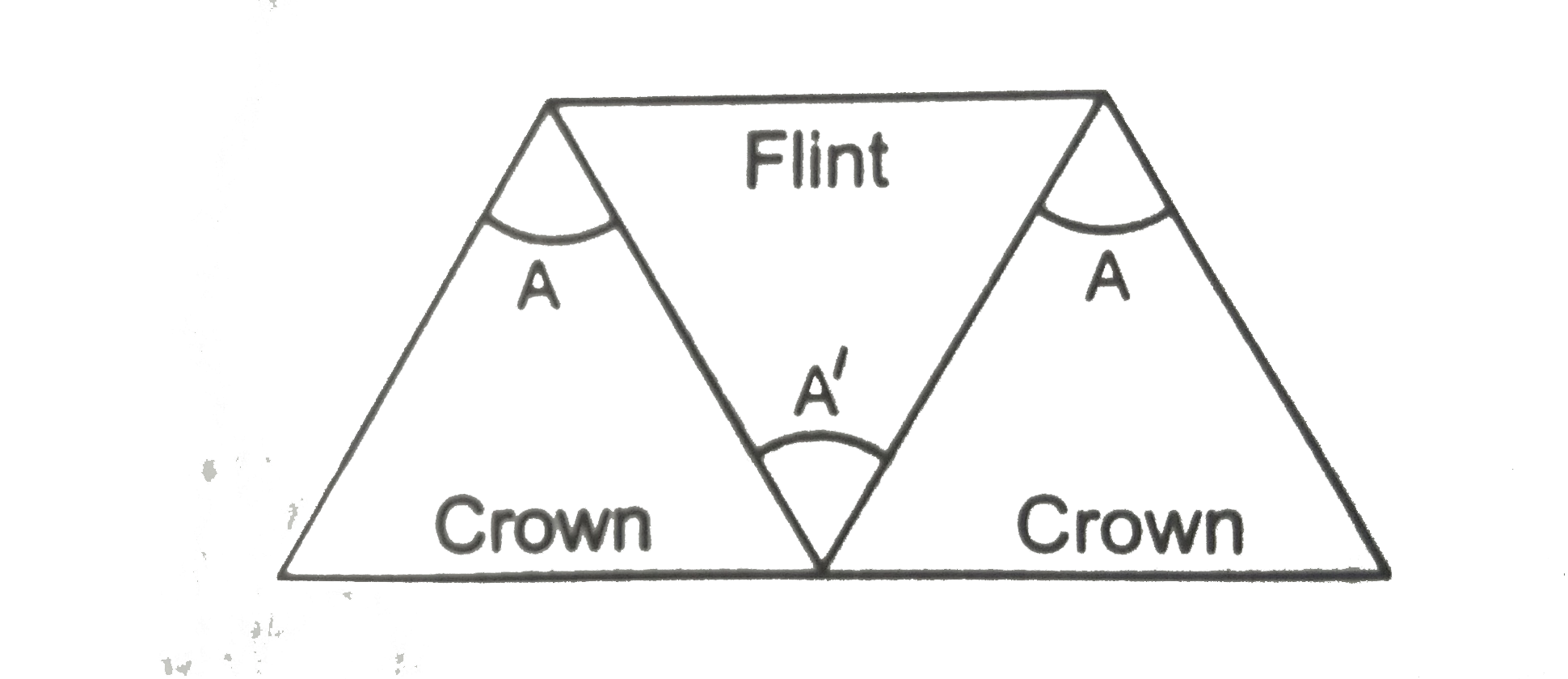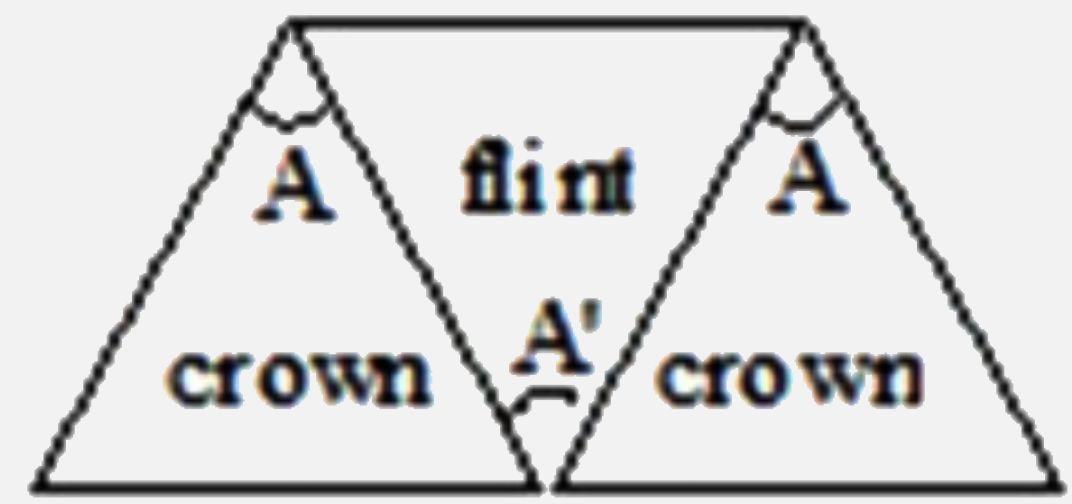A thin prism of crown glass (μr=1.515,μv=1.525) and a thin prism of flint glass (μr=1.612,μv=1.632) are placed in contact with each other. Their refracting angles are 5.0∘ each and are similarly directed. Calculate the angular dispersion produced by the combination.Solution in Tamil
The correct Answer is:A
Step by step video & image solution for A thin prism of crown glass (mu_r=1.515, mu_v=1.525) and a thin prism of flint glass (mu_r=1.612, mu_v=1.632) are placed in contact with each other. Their refracting angles are 5.0^@ each and are similarly directed. Calculate the angular dispersion produced by the combination. by Physics experts to help you in doubts & scoring excellent marks in Class 12 exams.
Topper's Solved these Questions
Similar Questions
A narrow beam of white light goes through a slab having parallel faces.
View SolutionWhen 1.0×1012electrons are transferred from one conductor to another, a potential difference of 10V . What will be capacitance of the two -conductor system .
02:13View SolutionThe amount of charge passed in time t through a cross-section of a wire is
Q(t)=At2+Bt+C.
(a)Write the dimensional formulae for A,B and C.
(b) If the numerical values of A,B,and C are 5,3 and 1 respectively in SI units,find the value of the current at t=5 s.01:07View SolutionThree thin prisms are combined as shown in figure. The refractive indices of the crown glass for red, yellow and violet rays are μr,μyandμv respectively and those for the flint glass are μ′r,μryandμ′v respectively. Find the ratio A'/A for which (a) there is no net angular dispersion, and (b) there is no net deviation in the yellow ray.
 04:36View Solution
04:36View SolutionDetermine the angle of flint glass prism, which should be combined with a crown glass prism of 5∘ so as to give dispersion, but no deviation. Given for crown glass, μv=1.523,μr1.515 For flint glass, μv'=1.688,μr'=1.650.
08:34View SolutionCalculate angle of dispersion between red and violet colours produced by a flint glass prism of refracting angle 60^@. Mu_v = 1.663 and mu_r = 1.622 .
07:38View SolutionAn achromatic prism is made by combining two prisms P_1(mu_v=1.523, mu_r=1.515) and P_2(mu_v=1.666, mu_r=1.650) , where mu represents the refractive index. If the angle of the prism P_1 is 10^@ , then the angle of prism P_2 will be
06:23View Solutionक्राउन काँच (nr=1.515,nv=1.525) का एक पतला प्रिज्म तथा फ्लिंट काँच (nr=1.612,nv=1.632) का एक पतला प्रिज्म इस प्रकार संयोजित है की उनके अपवर्तक कोण एक ही ओर है। दोनों के अपवर्तक कोण 5∘ है। इस संयोजक द्वारा उत्पन्न विक्षेपण का मान निकाले।
05:29View SolutionThe dispersion produced by an equilateral prism of flint- glass is 2.16^(@) and that produced by an equilateral prism of crown glass is 1.08^(@) . What should be the angle of a crown glass , which will produce an achromatic combination with a flint-glass prism of refracting angle 30^(@) ?
02:35View SolutionThe angular dispersion produced by a prism of angle 5∘ is [μv=1.665,μr=1.645]
05:21View SolutionCalculate the angle of dispersion between red and violet colours produced by a flint glass prism of refracting angle of 60∘ . Given μv=1.663 and μr1.622 .
06:02View SolutionThree thin prisms are combined as shown in figure . The refractive indices of the crown glass for red , yellow and violet rays are μr,μyandμv respectively and those for the flint glass are μr',μy'andμv' respectively . Find the ratio A'A for which , there is no net angular dispersion (A and A' are respective deviations )
 13:44View Solution
13:44View SolutionA crown glass prism of refracting angle 6^@ is to be used for deviation without dispersion with a flint glass of angle of prism alpha . Given : for crown glass mu_r=1.513 and mu_v = 1.523, for flint glass mu_r=1.645 and mu_v=1.665 . Find alpha
02:12View SolutionA crown glass prism and a flint glass prism are combined to produce dispersion without deviation. Mean refractive indices of crown , and flint glass are respectively 1.5 and 1.6. Ratio of angle of crown glass prism to that of flint prism is
02:17View SolutionThree thin prisms are combined as shown in figure. The refractive indices of the crown glass for red, yellow and violet rays are μr,μyandμv respectively and those for the flint glass are μ′r,μ′yandμ′v respectively. Find the ratio A'/A for which (a) there is no net angular dispersion, and (b) there is no net deviation in the yellow ray.
 02:08View Solution
02:08View SolutionThe angular dispersion produced by a prism of angle 5∘ is [μv=1.665,μr=1.645]
04:15View Solution

